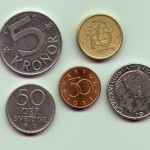Yesterday’s trade saw GBP/USD within the range of 1.5105-1.5214. The pair closed at 1.5129, down 0.15% on a daily basis, while marking the ninth consecutive trading day of decline. The daily low has been the lowest level since May 5th, when the cross registered a low of 1.5087.
At 6:56 GMT today GBP/USD was down 0.03% for the day to trade at 1.5123. The pair tested the daily S1 level, as it touched a daily low at 1.5119 during early Asian trade.
Today the cross may be influenced by a number of macroeconomic reports as listed below.
Fundamentals
United Kingdom
Manufacturing PMI by Markit/CIPS
Activity in United Kingdom’s sector of manufacturing probably kept on slowing down in September, with the corresponding Purchasing Managers Index coming in at a reading of 51.3, according to the median forecast by experts, down from 51.5 in August. If so, this would be the 30th consecutive month, when the PMI stood above the key level of 50.0, but it would also mark the lowest reading since April 2013, when a level of 50.2 was reported.
The index is based on a survey, encompassing managers of companies, that operate in sectors such as manufacturing, mining, utilities. They are asked about their estimate in regard to current business conditions in the sector in terms of new orders, output, employment, demand in the future. Values above 50.0 signify that respondents are rather optimists than pessimists.
In case the PMI slowed down more than projected in September, this would have a strong bearish effect on the sterling. The Chartered Institute of Purchasing and Supply (CIPS) is expected to release the official PMI reading at 8:30 GMT.
United States
Manufacturing PMI by Markit – final estimate
The final estimate of the Manufacturing Purchasing Managers Index probably fell to 51.3 in September, down from a preliminary value of 53.0, reported on September 23rd. If expectations were met, this would be the lowest PMI reading since October 2012, when the final gauge was reported at 51.0. In August the final seasonally adjusted PMI stood at 53.0, up from a preliminary value of 52.9.
According to preliminary data by Markit, ”latest increase in new work was the weakest since January 2014, which manufacturers linked to greater caution among clients and subdued overall business conditions.”
”New export orders picked up marginally in September, despite widespread reports that the strong dollar had weighed on demand from abroad. Although only slight, the latest rise was the most marked since February. Weaker overall new order growth and heightened uncertainty regarding the global economic outlook encouraged inventory streamlining and more cautious job hiring across the manufacturing sector in September.”
”The latest increase in payroll numbers was only marginal and the weakest since July 2014. A number of firms commented on the nonreplacement of departing staff and efforts to boost productivity at their plants”, Markit stated.
Values above the key level of 50.0 indicate optimism (expanding activity). In case the final PMI slowed down more than anticipated, this would cause a moderate bearish impact on the US dollar. The final reading is due out at 13:45 GMT.
ISM Manufacturing PMI
Activity in United States’ manufacturing sector probably slowed down for a third consecutive month in September, with the corresponding manufacturing PMI coming in at a reading of 50.7, according to expectations, down from 51.1 in August. If so, this would be the lowest PMI reading since May 2013, when the gauge was reported in the area of contraction (49.0).
The New Orders Index came in at 51.7 in August from 56.5 in July. The sub-gauge of production was reported at 53.6, falling from 56.0 in July. The index of employment slid to a value of 51.2 in August from 52.7 in July. The gauge of inventories of raw materials dropped to 48.5 in August from a reading of 49.5 in the previous month. In August, 10 manufacturing industries reported growth, 6 reported contraction and 2 registered no change in conditions, according to data by the Institute for Supply Management (ISM).
In case of a larger-than-expected slowdown in activity, the US dollar would certainly lose appeal. The official PMI reading by the ISM is scheduled for release at 14:00 GMT.
Bond Yield Spread
The yield on UK 2-year government bonds went as high as 0.625% on September 30th, or the highest level since September 28th (0.631%), after which it slid to 0.580% at the close to add 0.009 percentage point compared to September 29th. It has been the first gain in the past three trading days.
The yield on US 2-year government bonds climbed as high as 0.676% on September 30th, after which it fell to 0.637% at the close to lose 1.6 basis points (0.016 percentage point) compared to September 29th, while marking a third consecutive trading day of decline.
The spread between 2-year US and 2-year UK bond yields, which reflects the flow of funds in a short term, shrank to 0.057% on September 30th from 0.082% on September 29th. The September 30th yield spread has been the lowest one since September 3rd, when the difference was 0.032%.
Meanwhile, the yield on UK 10-year government bonds soared as high as 1.809% on September 30th, or the highest level since September 28th, after which it slid to 1.760% at the close to add 0.003 percentage point compared to September 29th. It has been the first increase in the past three trading days.
The yield on US 10-year government bonds climbed as high as 2.104% on September 30th, after which it slipped to 2.040% at the close to lose 2 basis points (0.02 percentage point) compared to September 29th, while marking a third straight trading day of decrease.
The spread between 10-year US and 10-year UK bond yields narrowed to 0.280% on September 30th from 0.303% on September 29th. The September 30th yield difference has been the lowest one since September 17th, when the spread was 0.234%.
Daily and Weekly Pivot Levels
By employing the Camarilla calculation method, the daily pivot levels for GBP/USD are presented as follows:
R1 – 1.5139
R2 – 1.5149
R3 (range resistance) – 1.5159
R4 (range breakout) – 1.5189
S1 – 1.5119
S2 – 1.5109
S3 (range support) – 1.5099
S4 (range breakout) – 1.5069
By using the traditional method of calculation, the weekly pivot levels for GBP/USD are presented as follows:
Central Pivot Point – 1.5294
R1 – 1.5455
R2 – 1.5728
R3 – 1.5889
S1 – 1.5021
S2 – 1.4860
S3 – 1.4587





